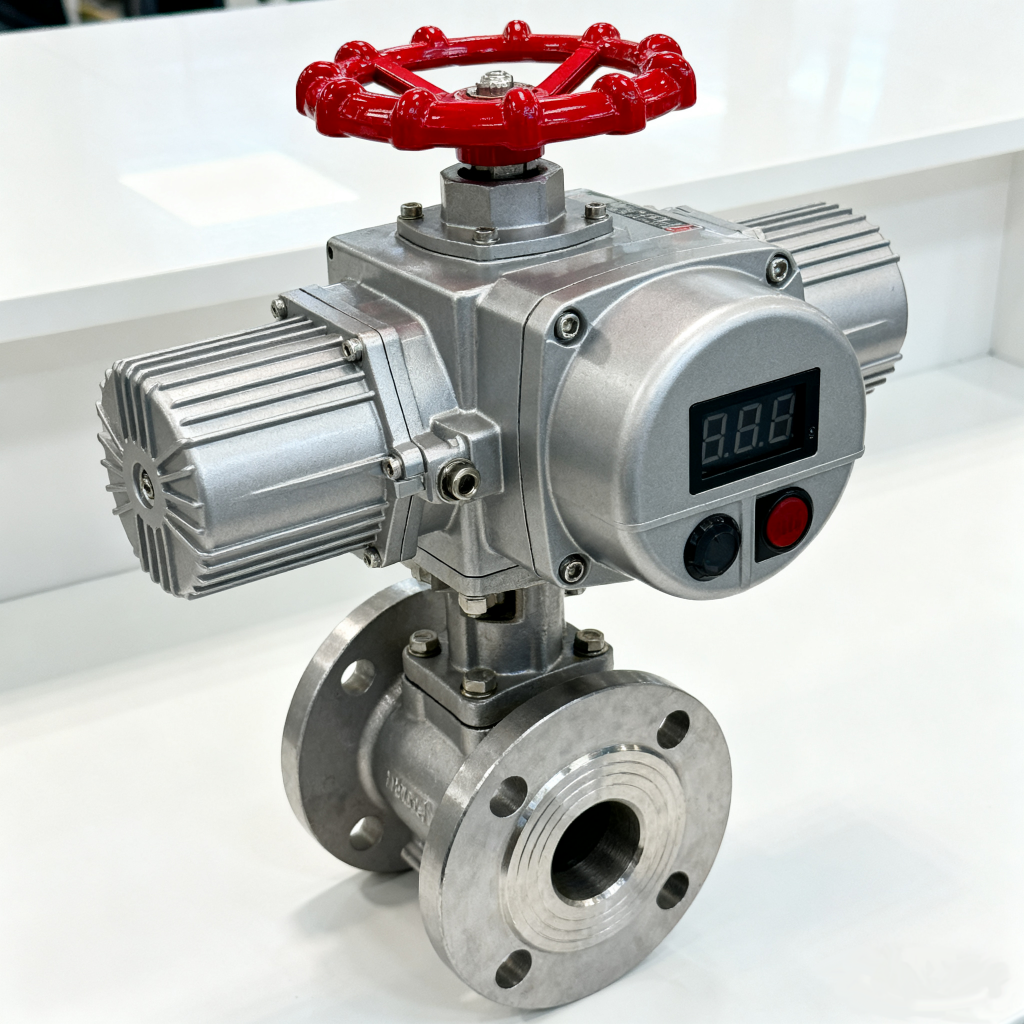Choosing the right valve actuator is critical for industries that rely on precise fluid or gas control. The right actuator—whether manual, pneumatic, or electric—ensures smooth operation, reduces downtime, and improves energy efficiency. This guide will help you understand each type’s strengths and limitations and make the best choice for your system.
1.Understanding Valve Actuators
A valve actuator is a device that moves or controls a valve, enabling precise control of fluid or gas flow within industrial systems. It ensures that the right amount of fluid or gas passes through the system exactly when and where it’s needed. These actuators use manual force, compressed air, or electricity to move a valve, opening, closing, or adjusting its flow. Understanding the basics of industrial valve actuators is essential before selecting the right type for your system. Key factors include torque requirements, control precision, environmental conditions, and whether remote or automated operation is needed.

2.Manual Valve Actuators: Simple, Reliable, Cost-Effective
Manual valve actuators are the simplest type of actuator, operated by hand to open or close a valve. They are cost-effective, easy to install, and need very little maintenance, making them ideal for systems that operate infrequently or do not require automation. Manual actuators also provide a reliable backup solution in case of power or air supply failure.
Applications and Valve Types:
- Water supply and distribution networks: Best for Gate Valves, suitable for low-frequency operation.
- Small-scale manufacturing lines: Ideal for Ball Valves, easy to operate and low maintenance.
- Emergency shut-off systems: Works well with Globe Valves, provides reliable manual closure.
3.Pneumatic Valve Actuators: Fast and Durable
Pneumatic valve actuators use compressed air to operate valves, providing fast and reliable movement in industrial systems. They are especially suited for environments that require quick response times or frequent operation. Pneumatic actuators are durable in harsh conditions, including high temperatures, corrosive atmospheres, or dusty settings. However, they require a consistent supply of compressed air, which can increase energy costs and infrastructure needs.
Applications and Valve Types:
- Oil and gas processing facilities: Ideal for Control Valves, supports frequent operation and fast response.
- Chemical and pharmaceutical plants: Best with Diaphragm Valves, durable in corrosive environments.
- Food and beverage production lines: Works well with Sanitary Ball Valves, allows fast operation to maintain efficiency.
4.Electric Valve Actuators: Precision and Automation
Electric valve actuators are powered by electricity, providing precise and consistent control over valve operation. Electric valve actuators are perfect for systems that need automation or remote control, as they easily integrate with smart industrial control and monitoring systems. Electric actuators are particularly useful in applications where accuracy and repeatability are critical, such as HVAC systems, water treatment plants, and power generation facilities. The main limitation is the higher initial cost and dependency on a stable power supply.
Applications and Valve Types:
- HVAC and building automation: Ideal for Modulating Valves, enables precise control and remote management.
- Water and wastewater treatment plants: Works well with Gate Valves or Ball Valves, supports automated operation.
- Power generation and energy management systems: Best for Globe Valves, allows precise control of steam or cooling water.

5.Comparing Manual, Pneumatic, and Electric Actuators
When choosing a valve actuator, it’s important to compare the three main types: manual, pneumatic, and electric. Each type has its own strengths, limitations, and ideal applications.
- Cost: Manual actuators have the lowest upfront cost. Pneumatic actuators are moderately priced, while electric actuators usually require a higher initial investment but can save money over time through automation.
- Energy Requirements: Manual actuators need no energy, pneumatic actuators require compressed air, and electric actuators run on electricity.
- Control and Automation: Manual actuators offer simple, hands-on operation. Pneumatic actuators provide fast response and partial automation, while electric actuators deliver precise, remote, or fully automated control.
- Maintenance and Durability: Manual actuators need minimal maintenance. Pneumatic actuators are robust and reliable in harsh environments, and electric actuators may require periodic checks for electrical components but offer consistent long-term performance.
6.Key Considerations When Choosing the Best Actuator
Selecting the right valve actuator requires careful evaluation of several factors beyond type and cost. Key considerations include:
- Environmental Conditions: Extreme temperatures, humidity, corrosive atmospheres, or dusty environments can affect actuator performance.
- Torque and Sizing: It’s essential to match the actuator’s torque to the valve size to ensure smooth operation and avoid damage to the system.
- Safety Requirements: Fail-safe operation, emergency manual override, and compliance with industrial safety standards are essential in critical applications.
- Control Needs: Decide whether you need simple manual control, partial automation, or full integration with industrial automation systems.
7.Case Examples: How Industries Choose the Right Actuator
Real-world examples help illustrate how different valve actuators fit various industrial needs.
- Manual Actuators: Municipal water systems often use manual actuators for low-frequency control and emergency shut-offs. They are cost-effective and reliable where automation is not critical.
- Pneumatic Actuators: Petrochemical refineries and chemical plants rely on pneumatic actuators for rapid response and durability in harsh environments. Frequent operation and safety requirements make them ideal for these industries.
- Electric Actuators: Smart building systems, HVAC networks, and water treatment facilities often deploy electric actuators for precise, automated control. Integration with industrial control systems allows remote monitoring and efficiency improvements.
Conclusion
Choosing the right valve actuator—manual, pneumatic, or electric—affects your system’s efficiency, safety, and reliability. Manual actuators are simple and cost-effective, pneumatic actuators are fast and durable, and electric actuators offer precision and automation. Considering system needs, environment, control, and maintenance helps you select the best option for smooth, efficient operation.